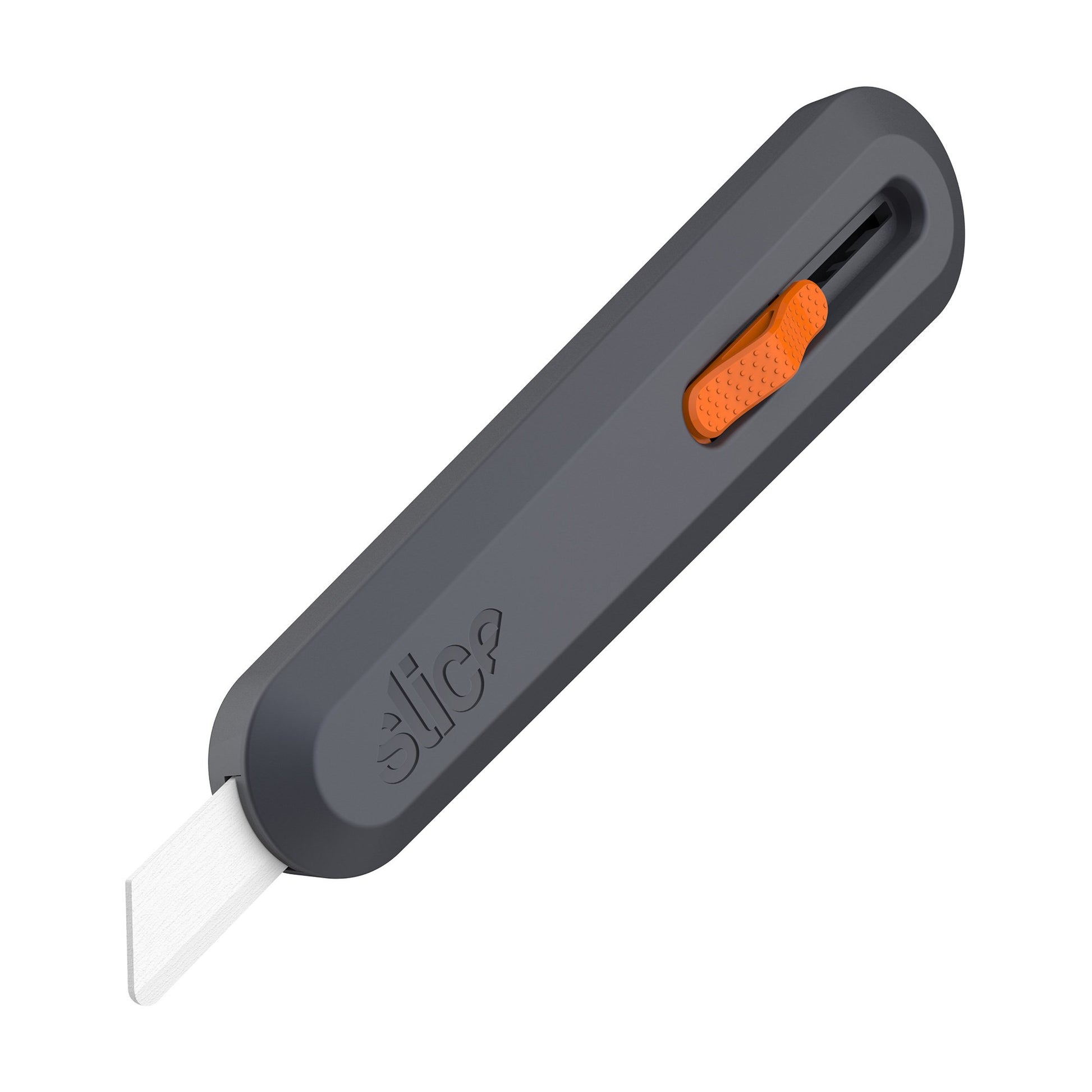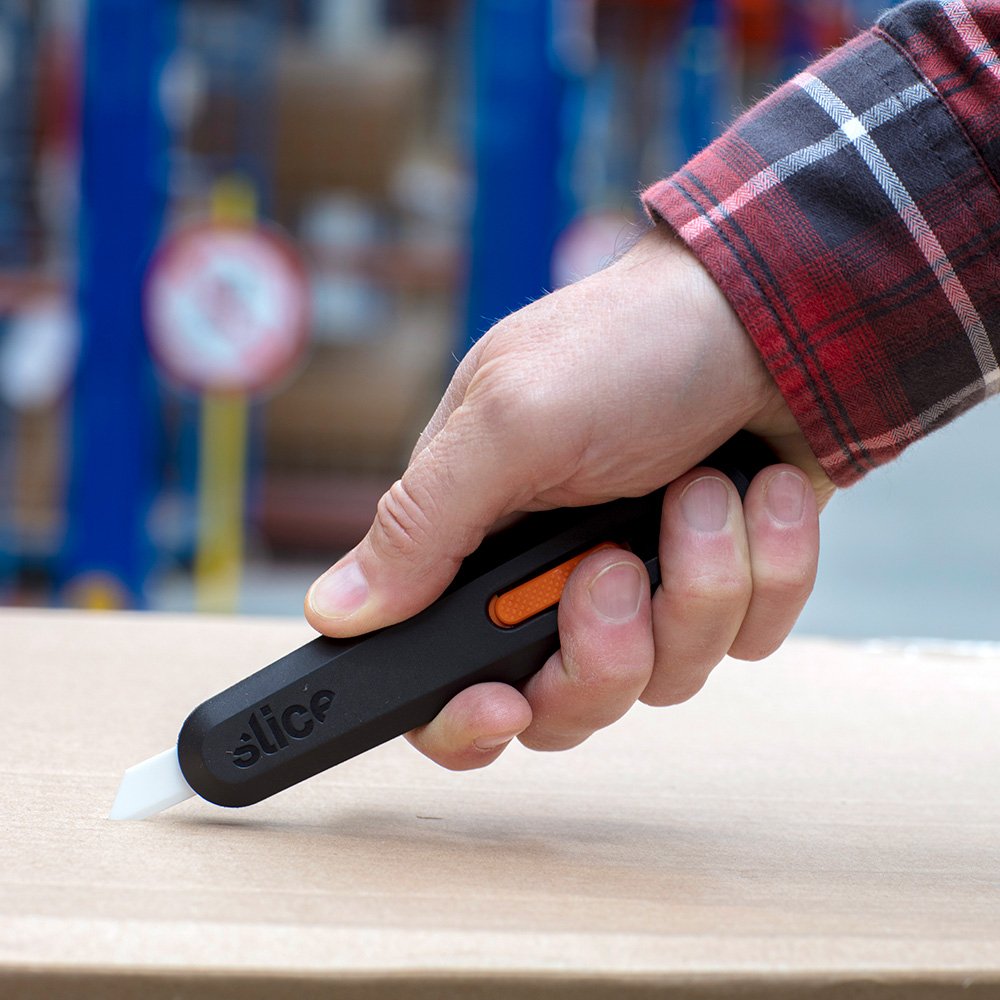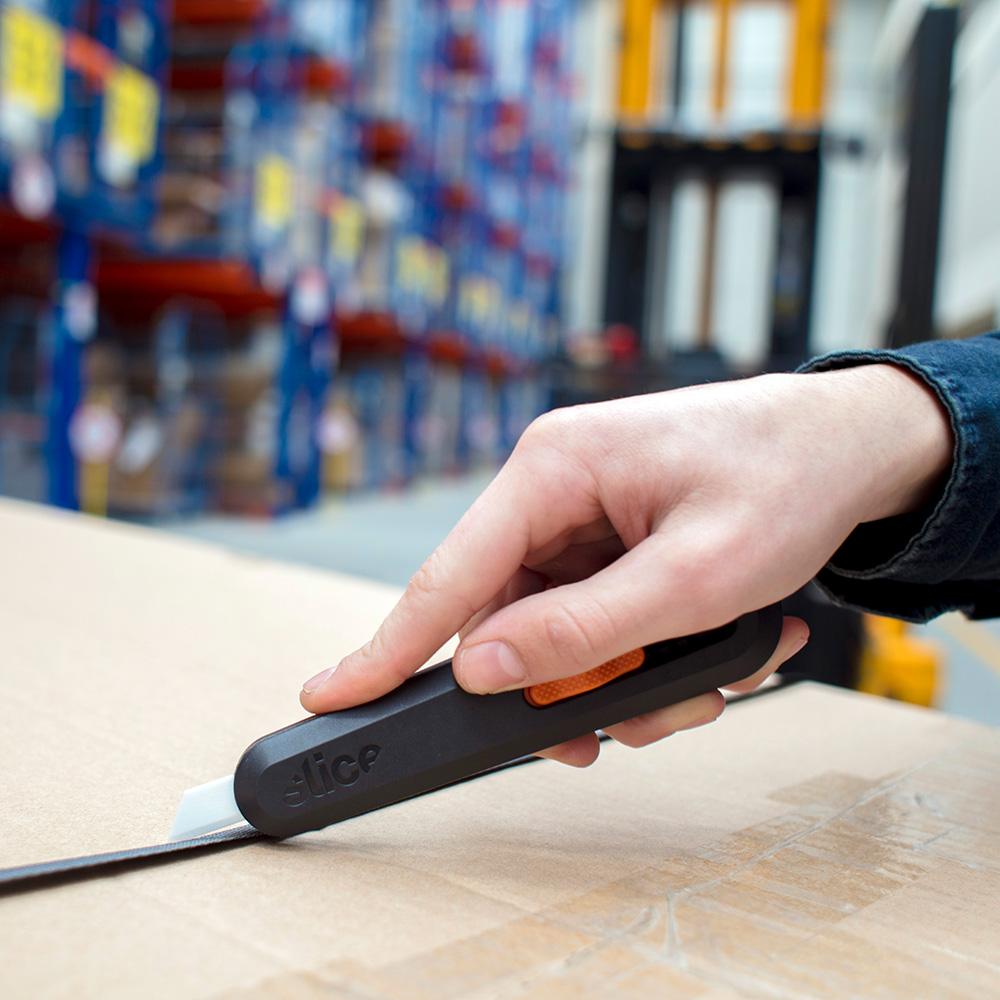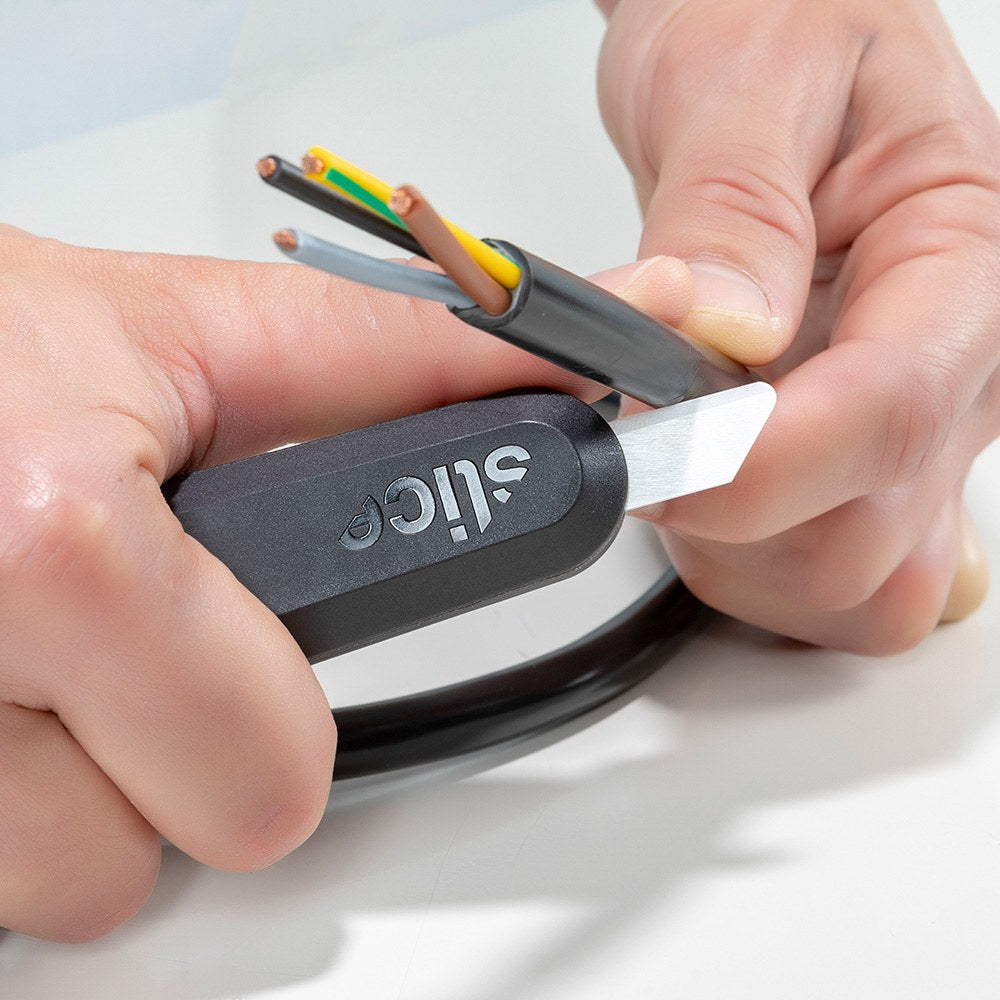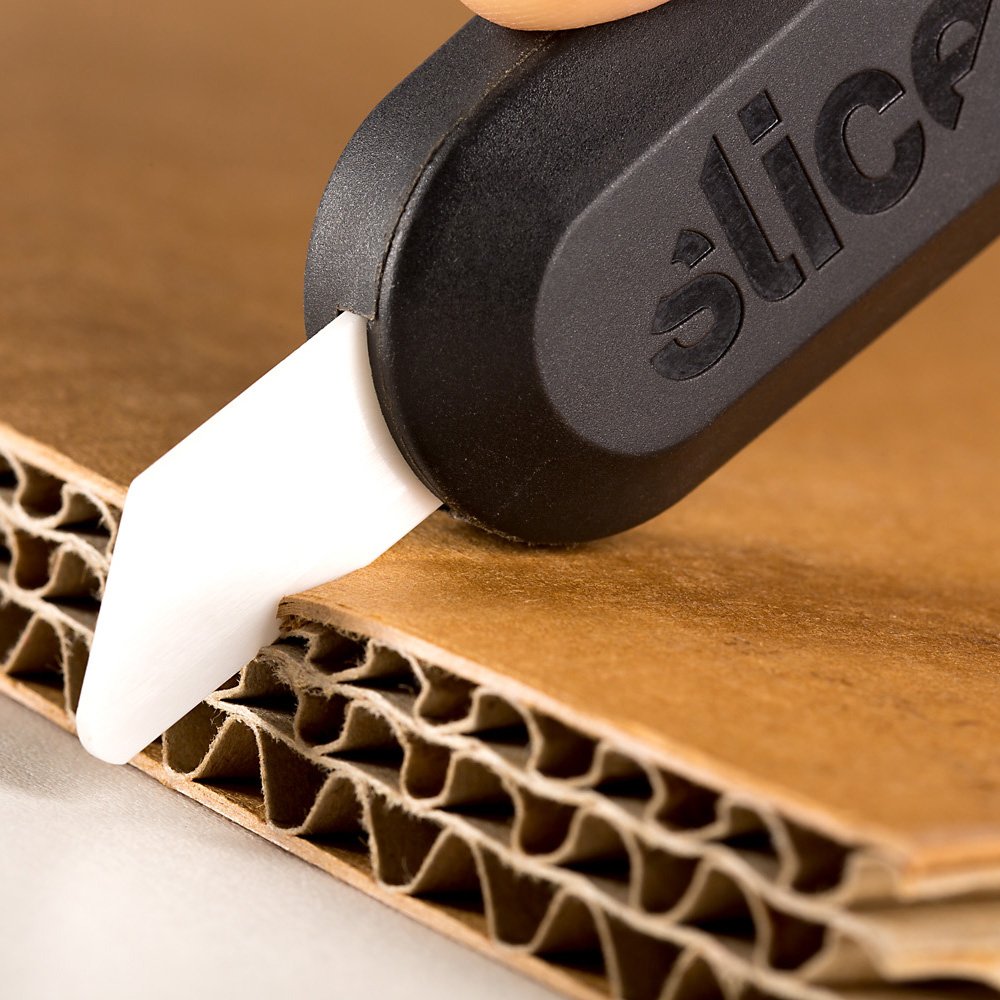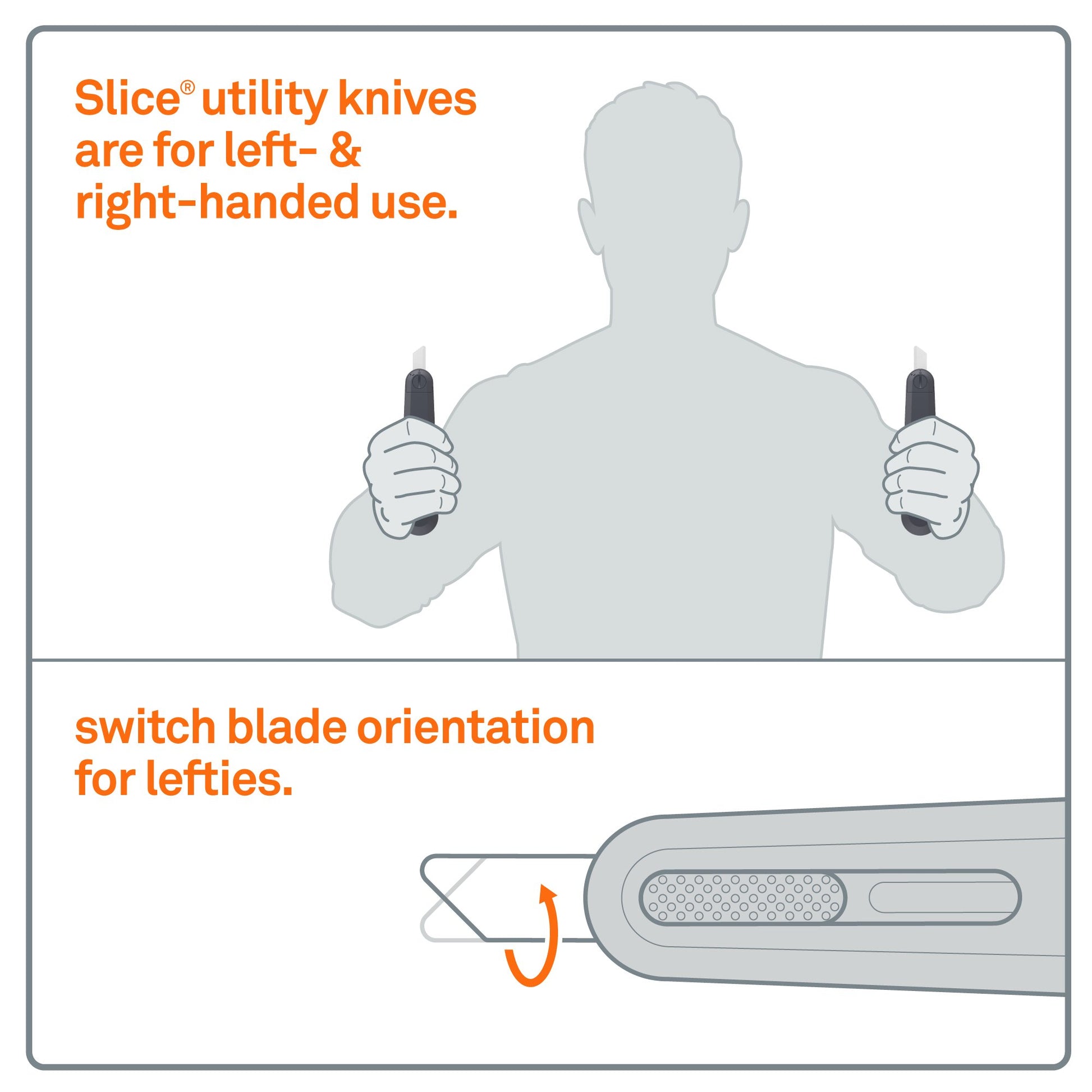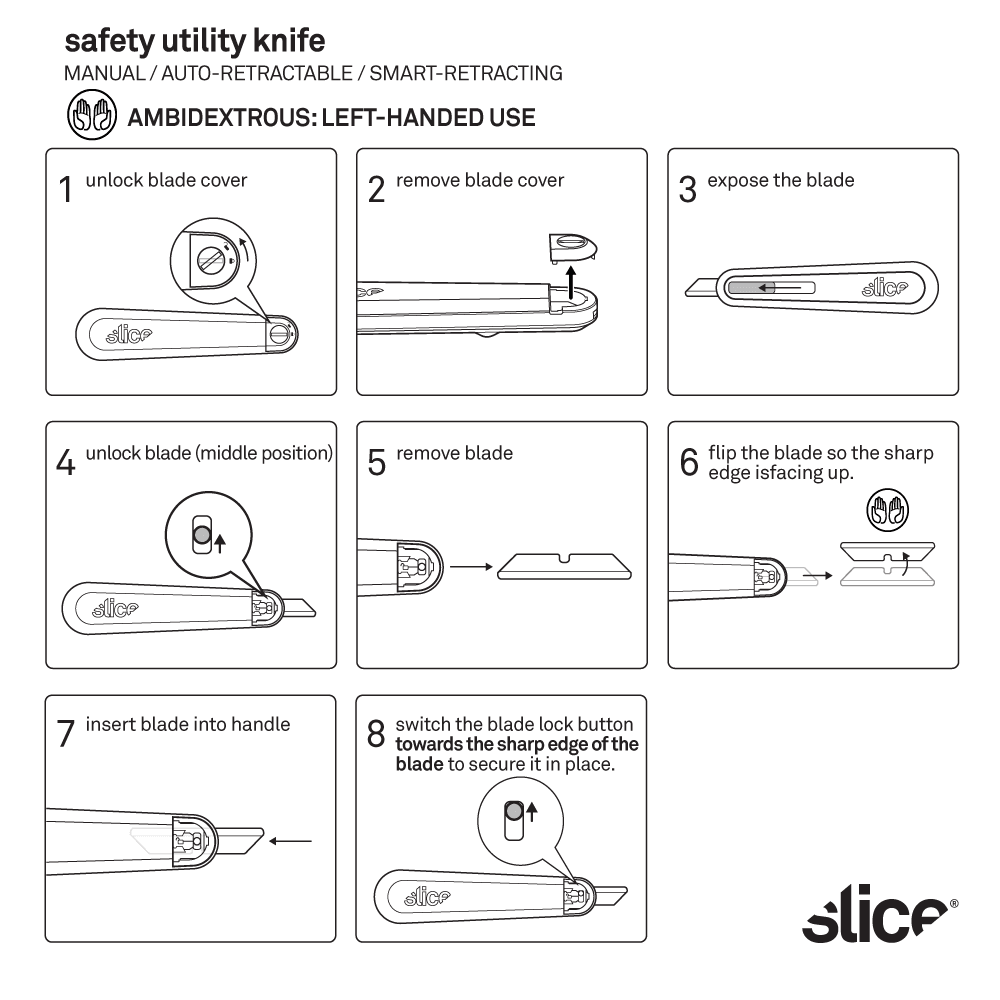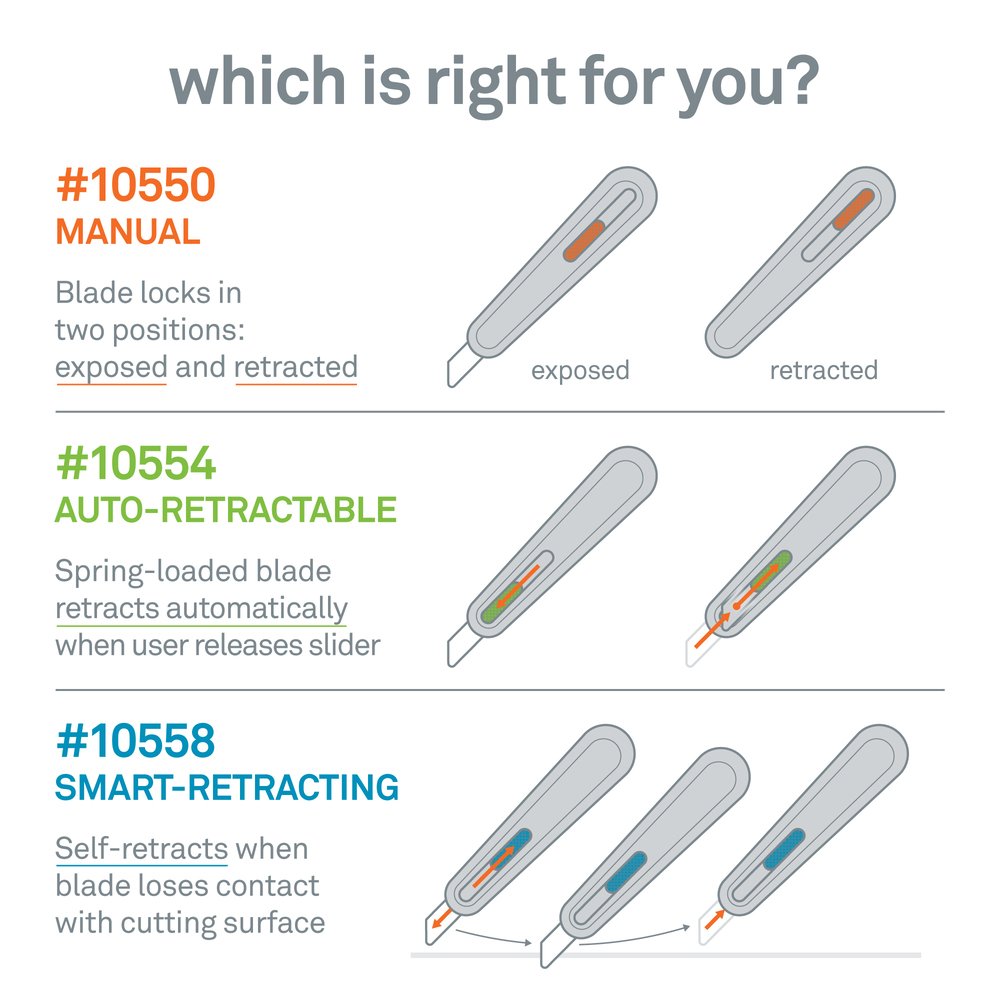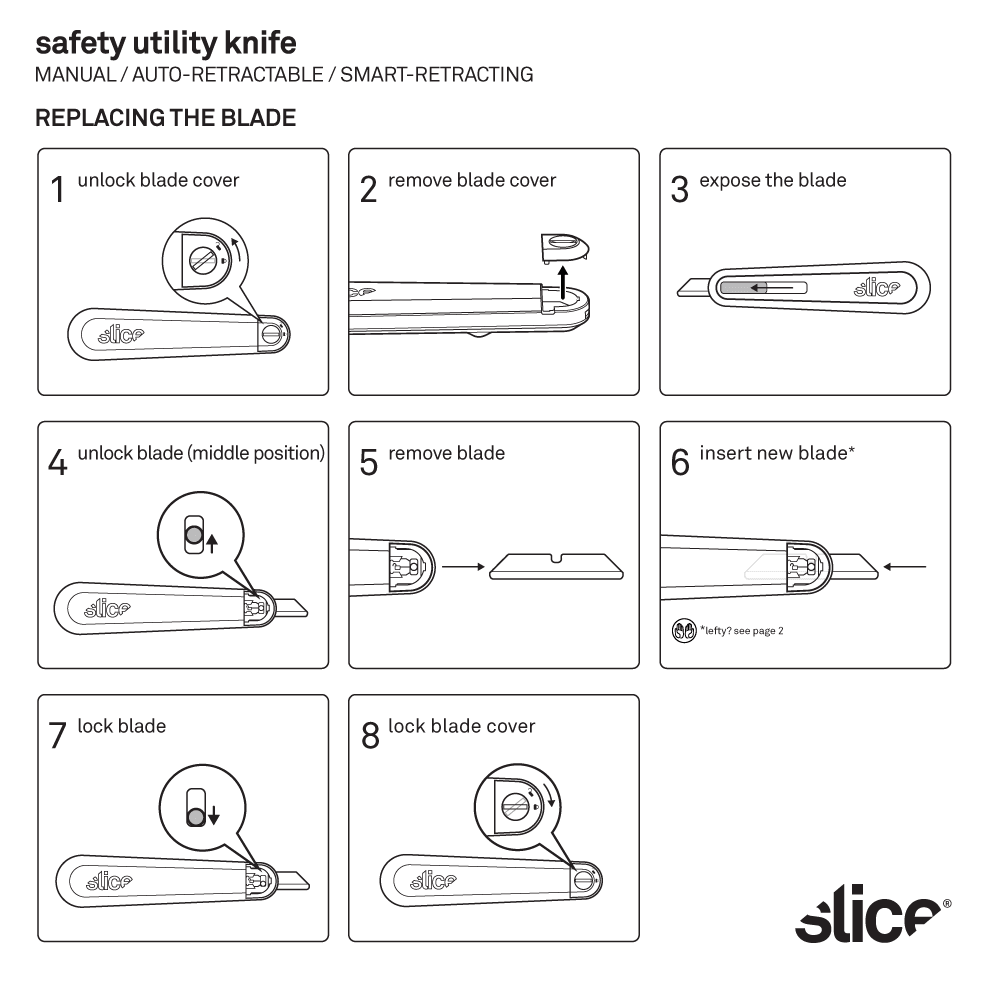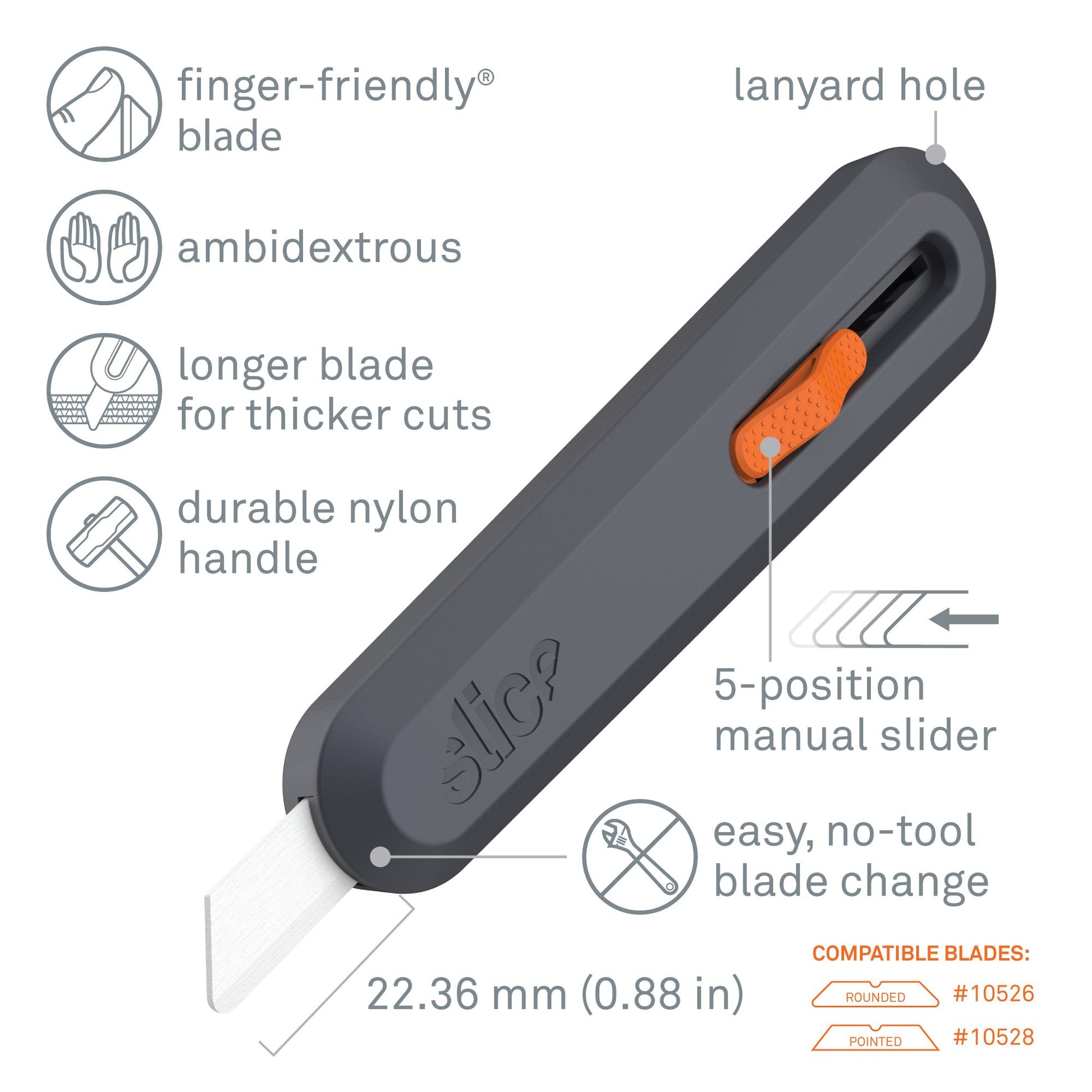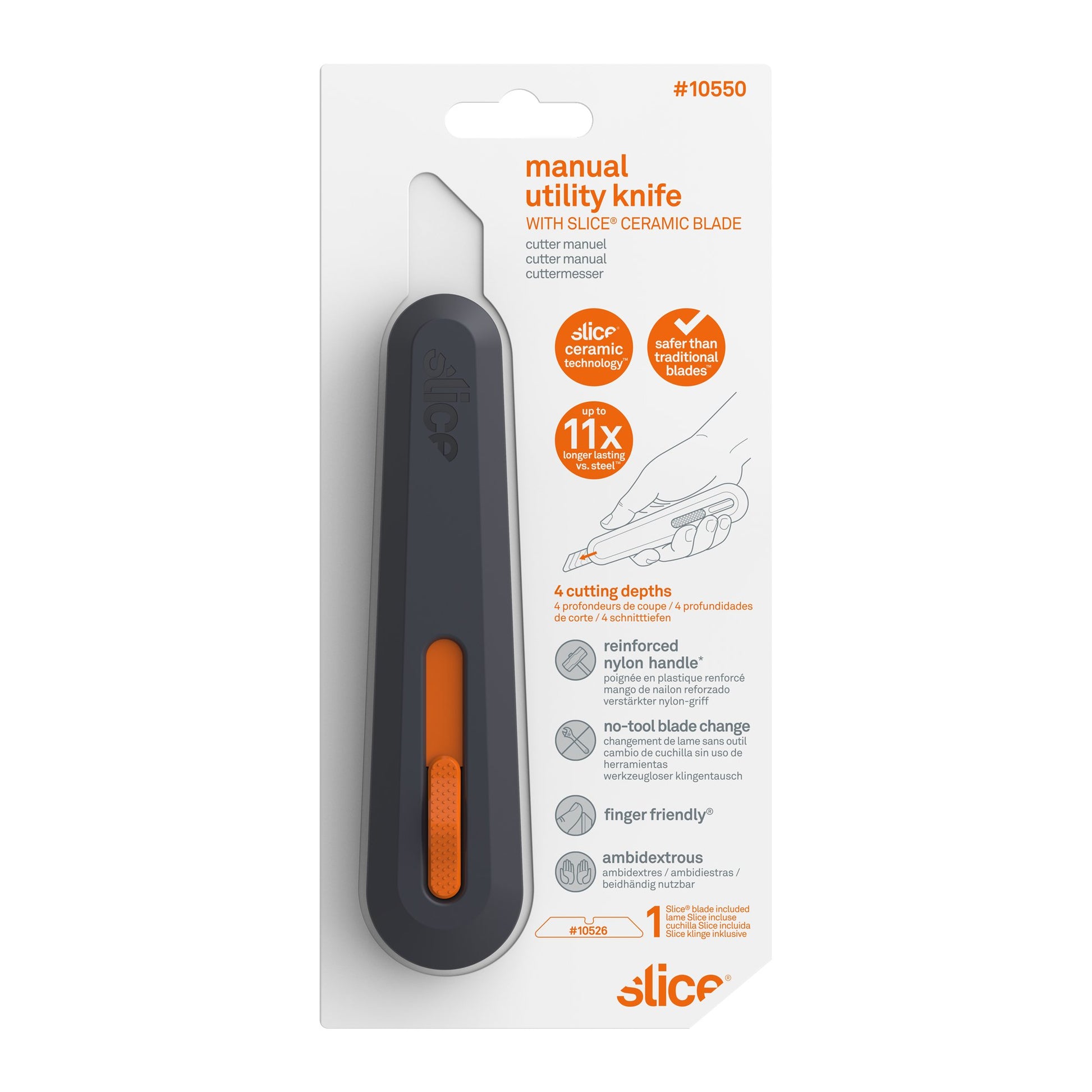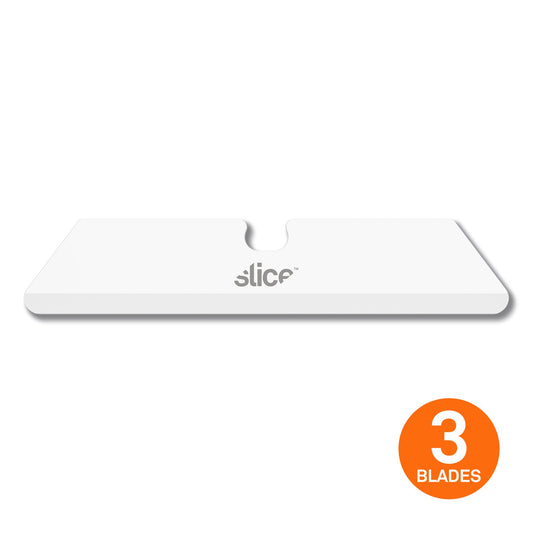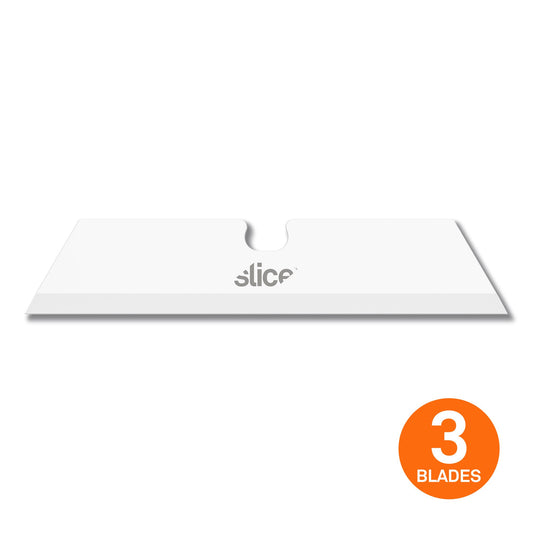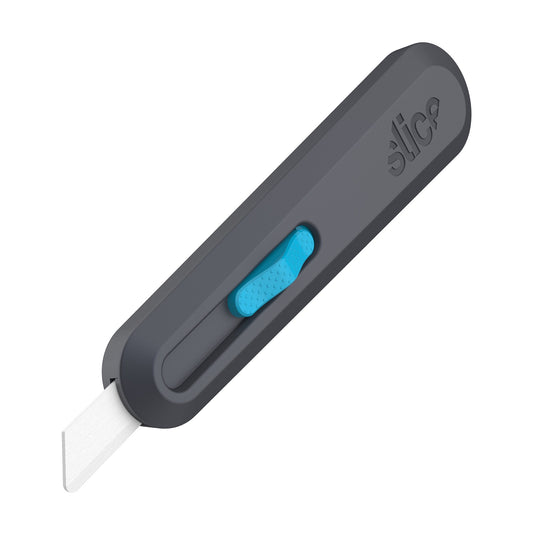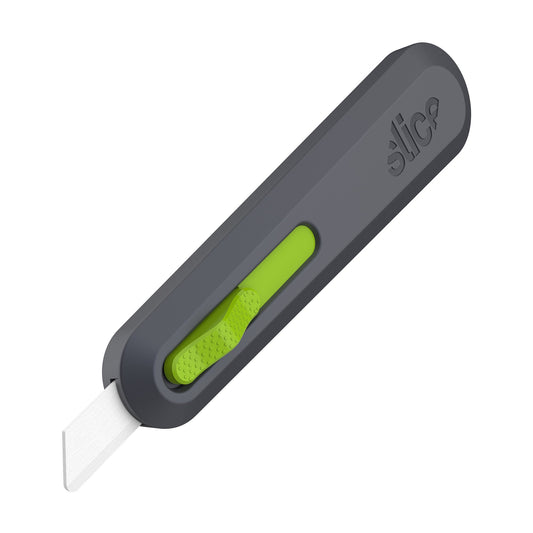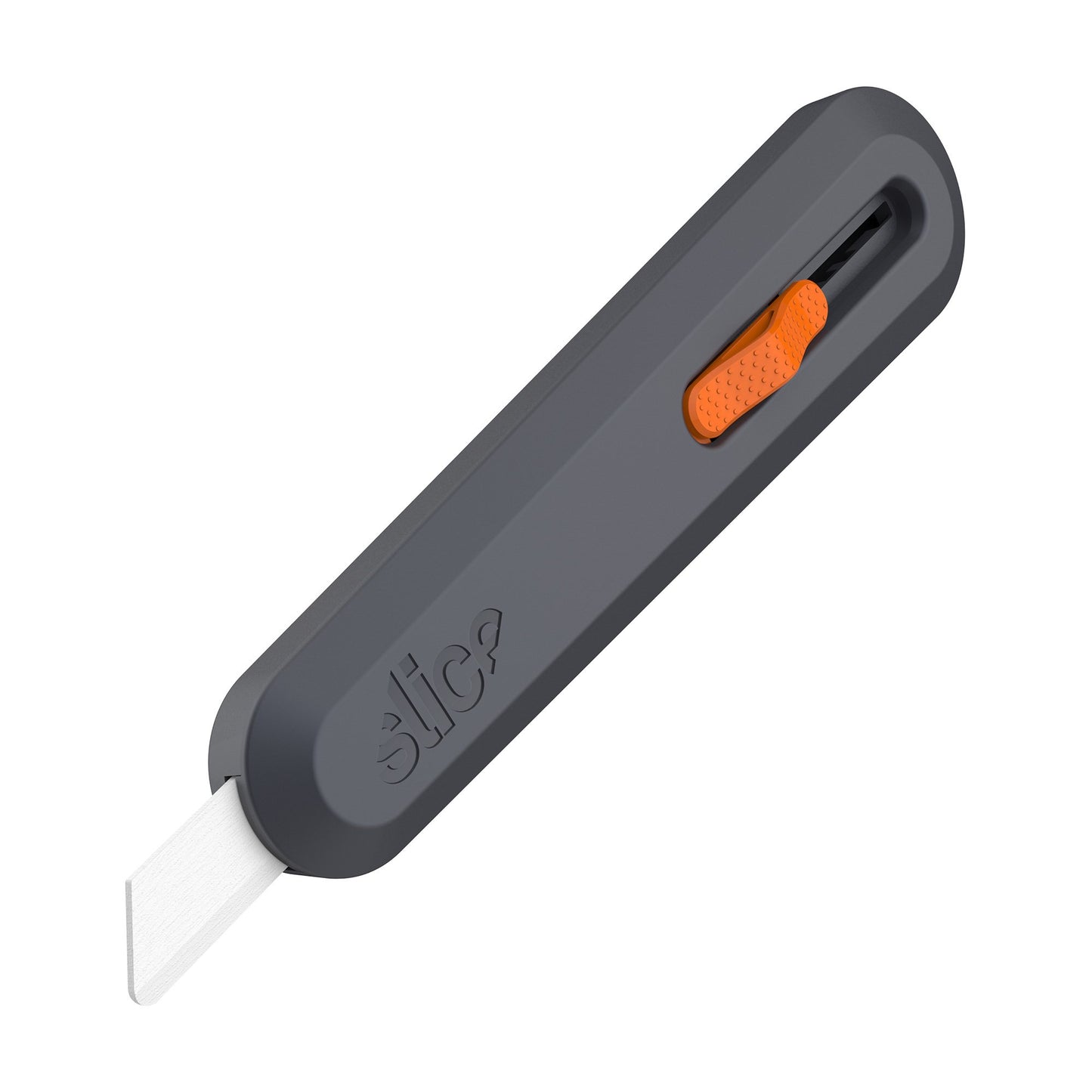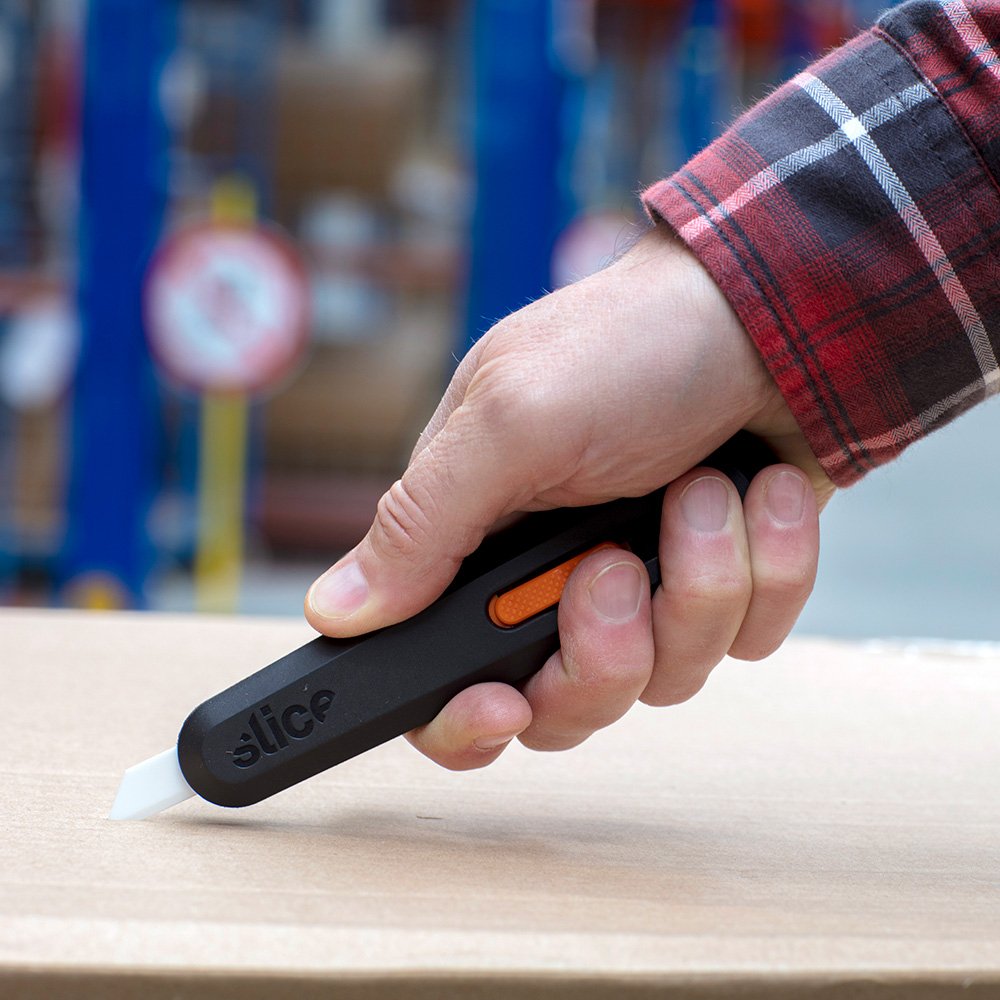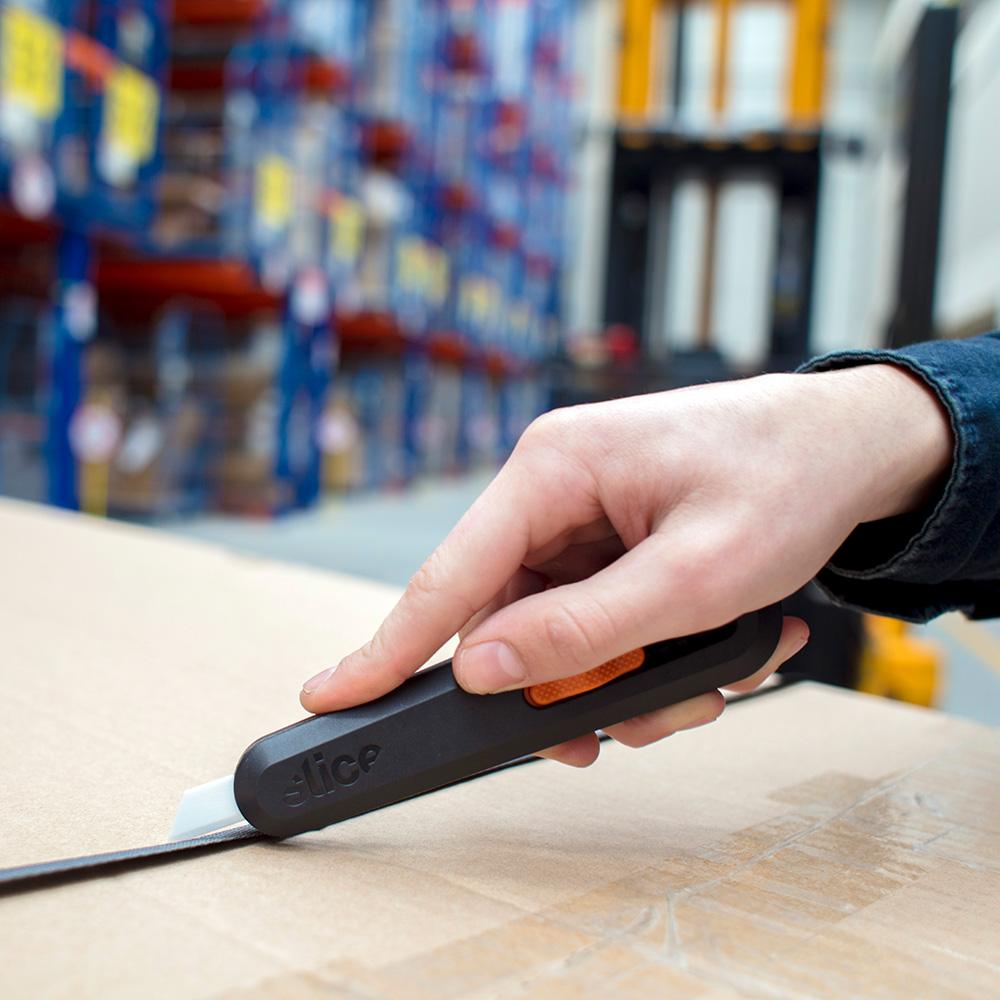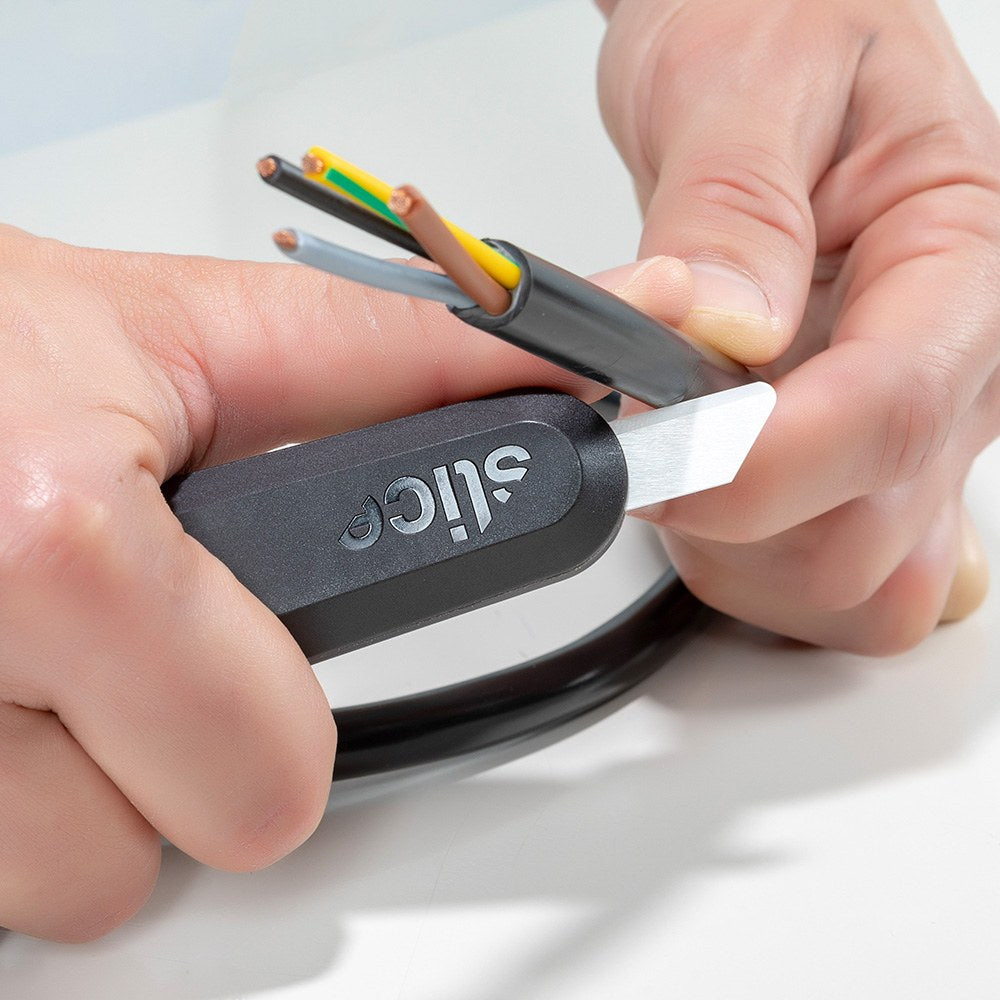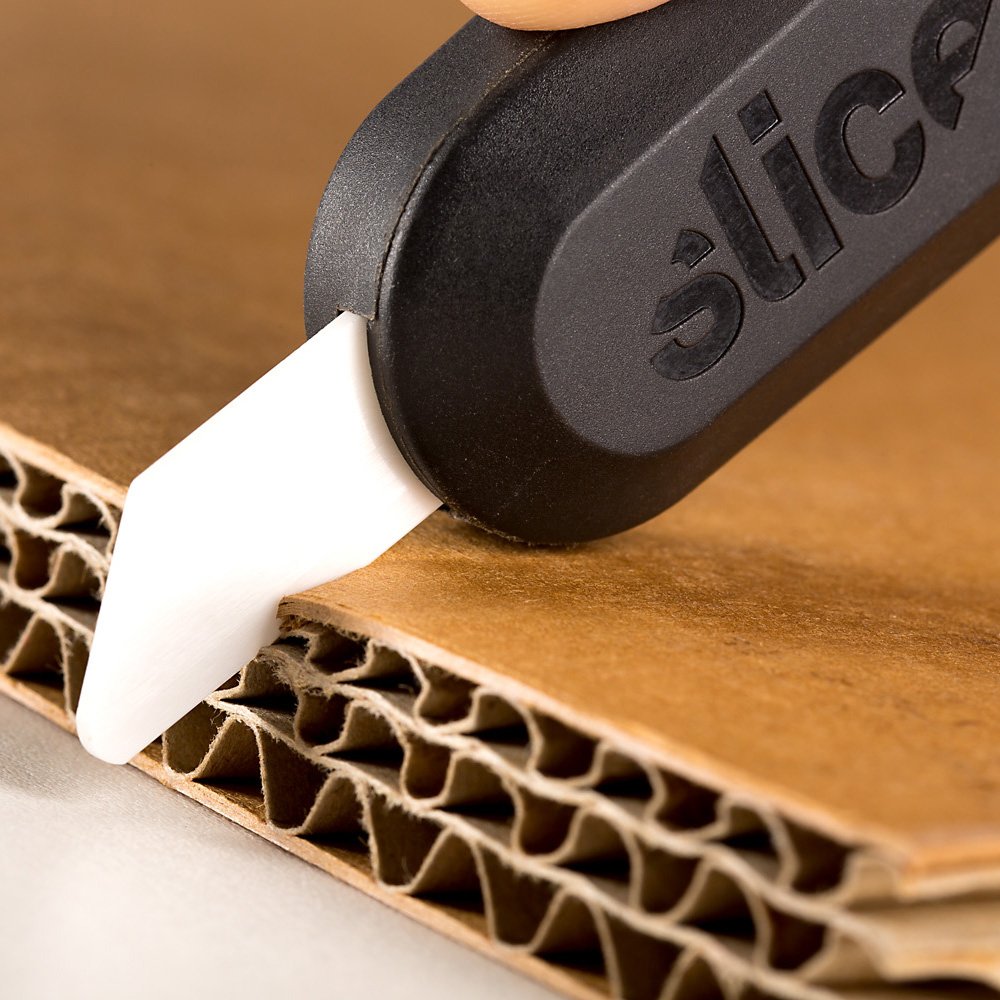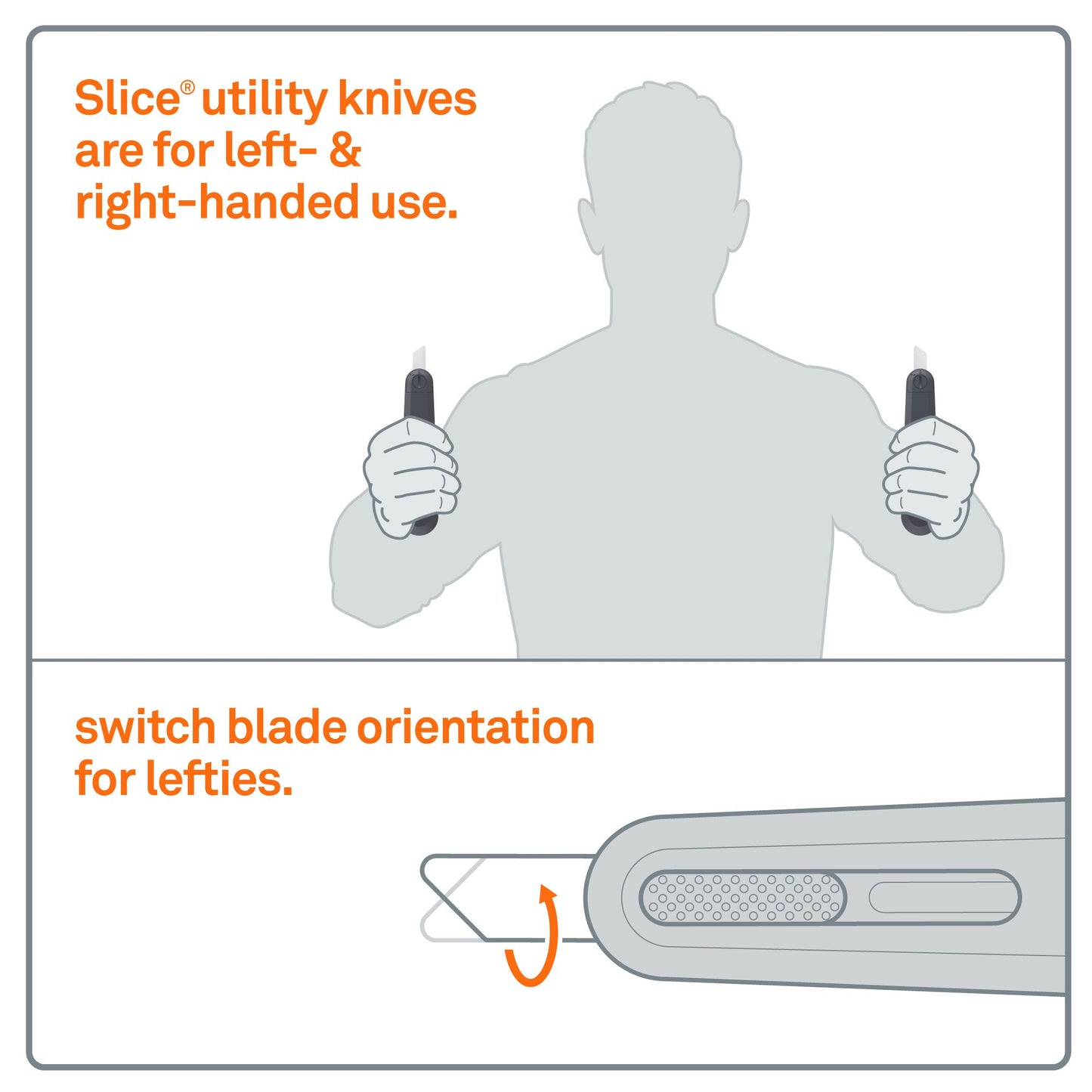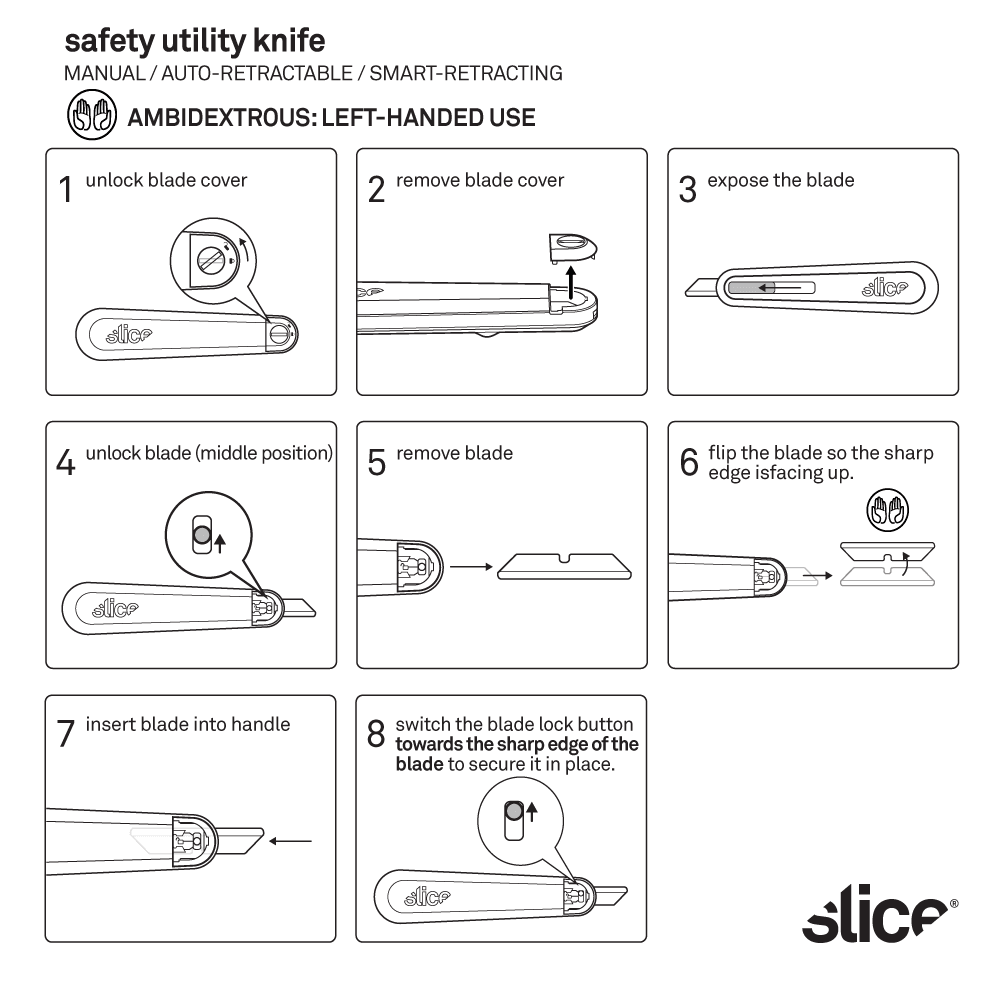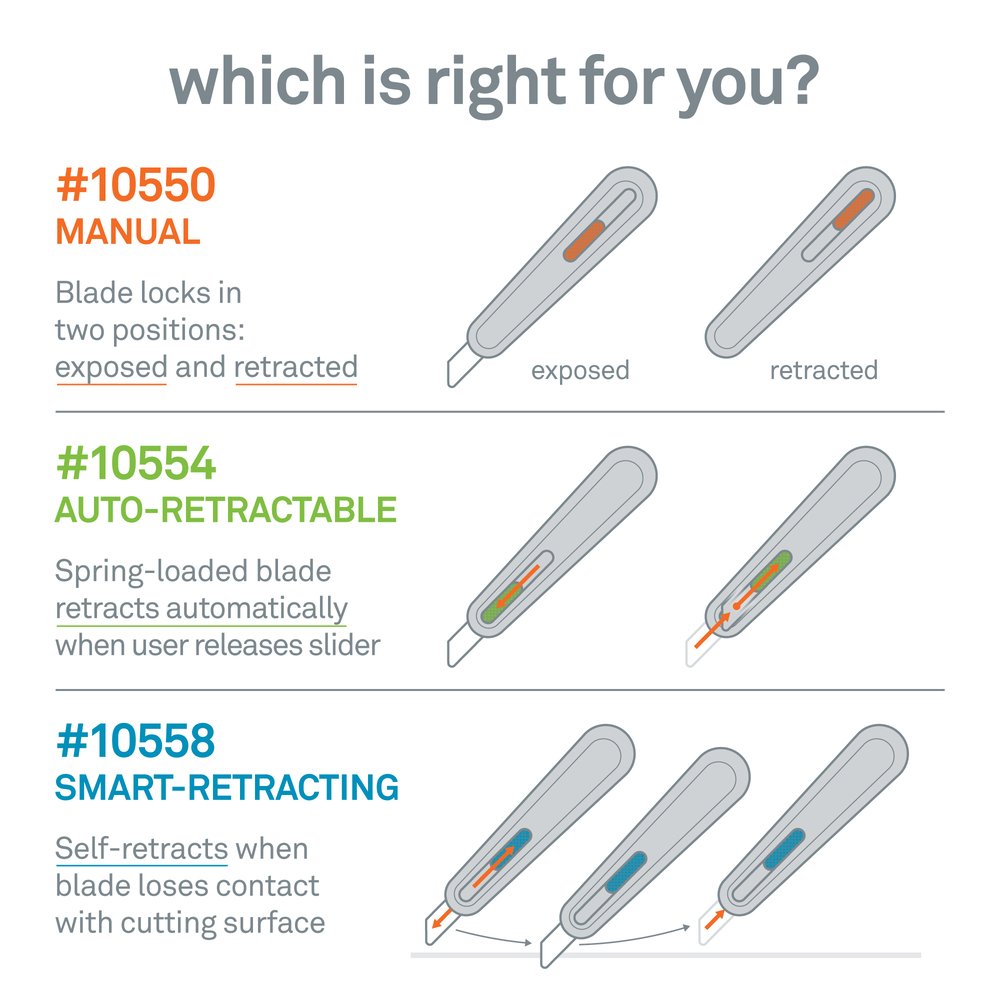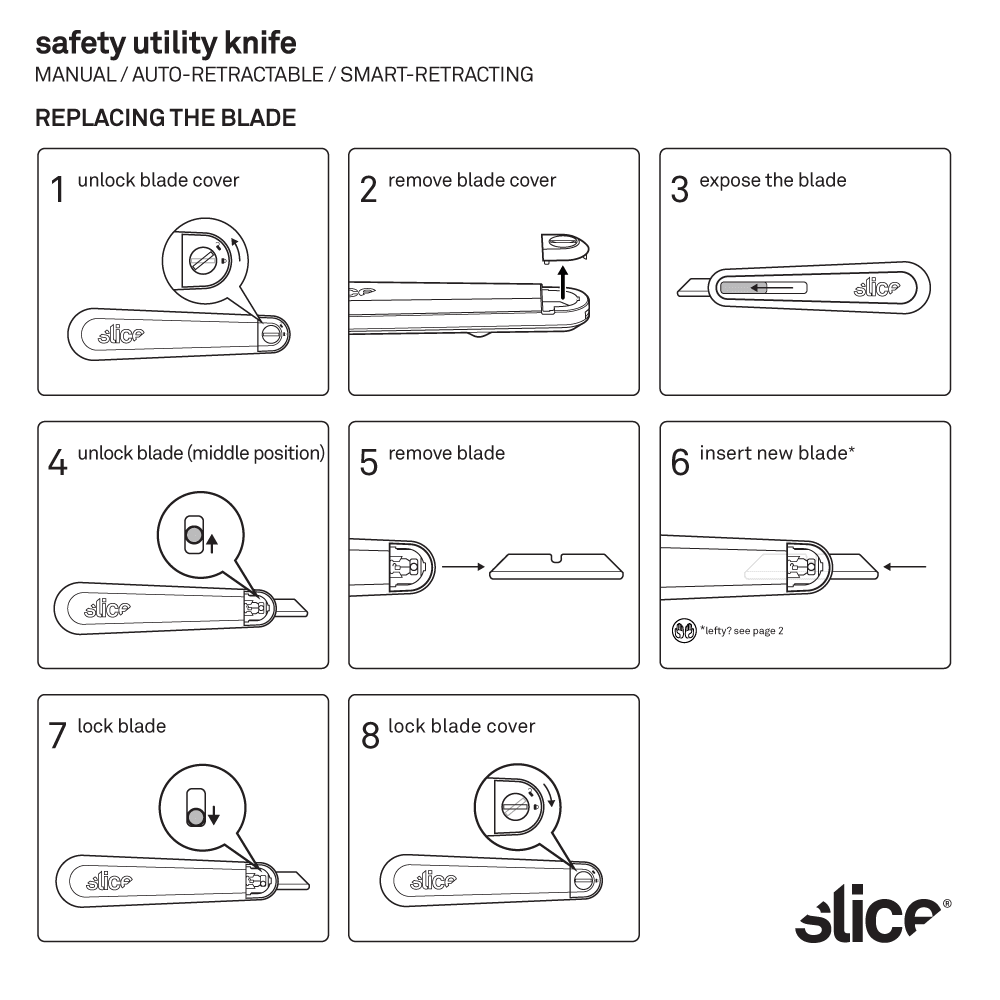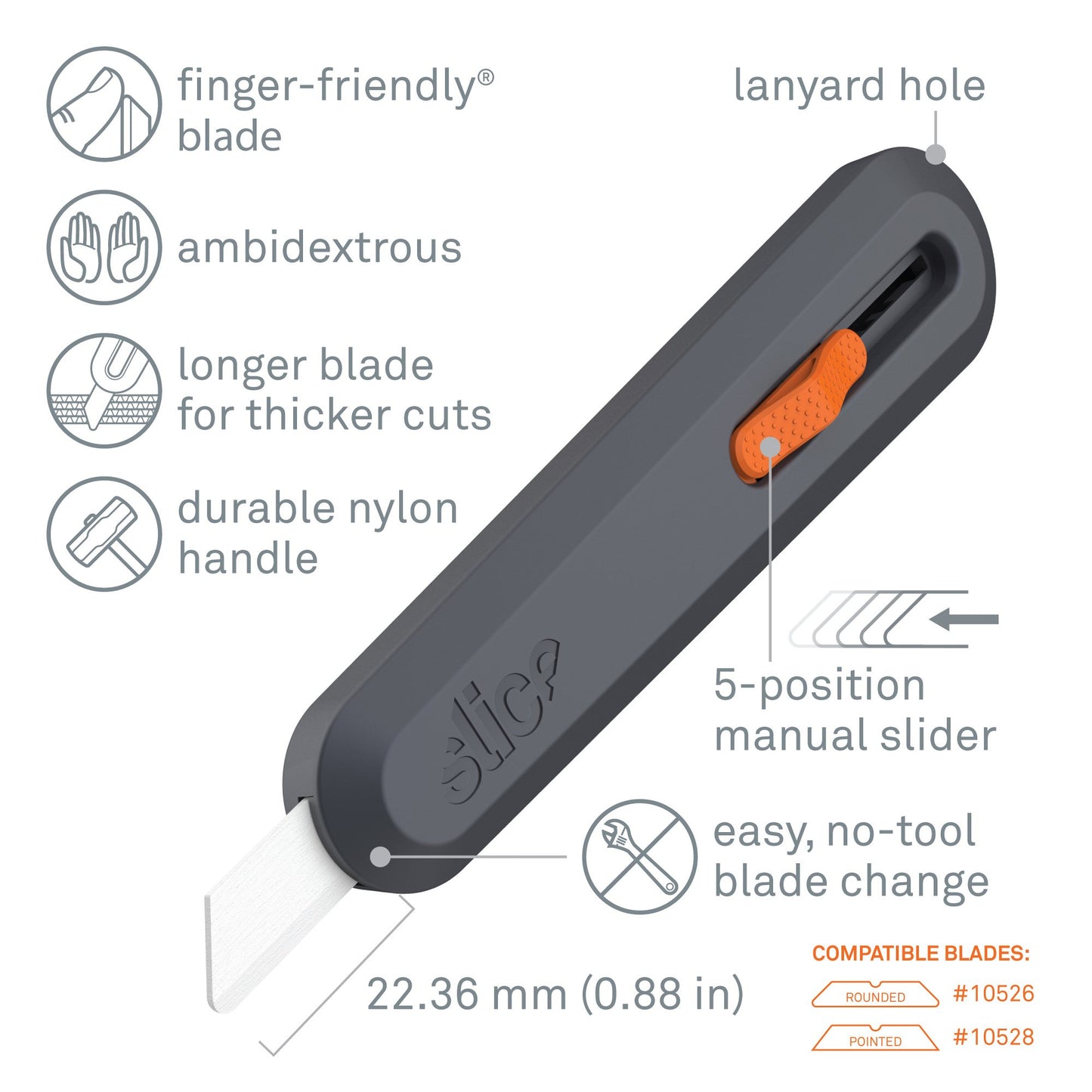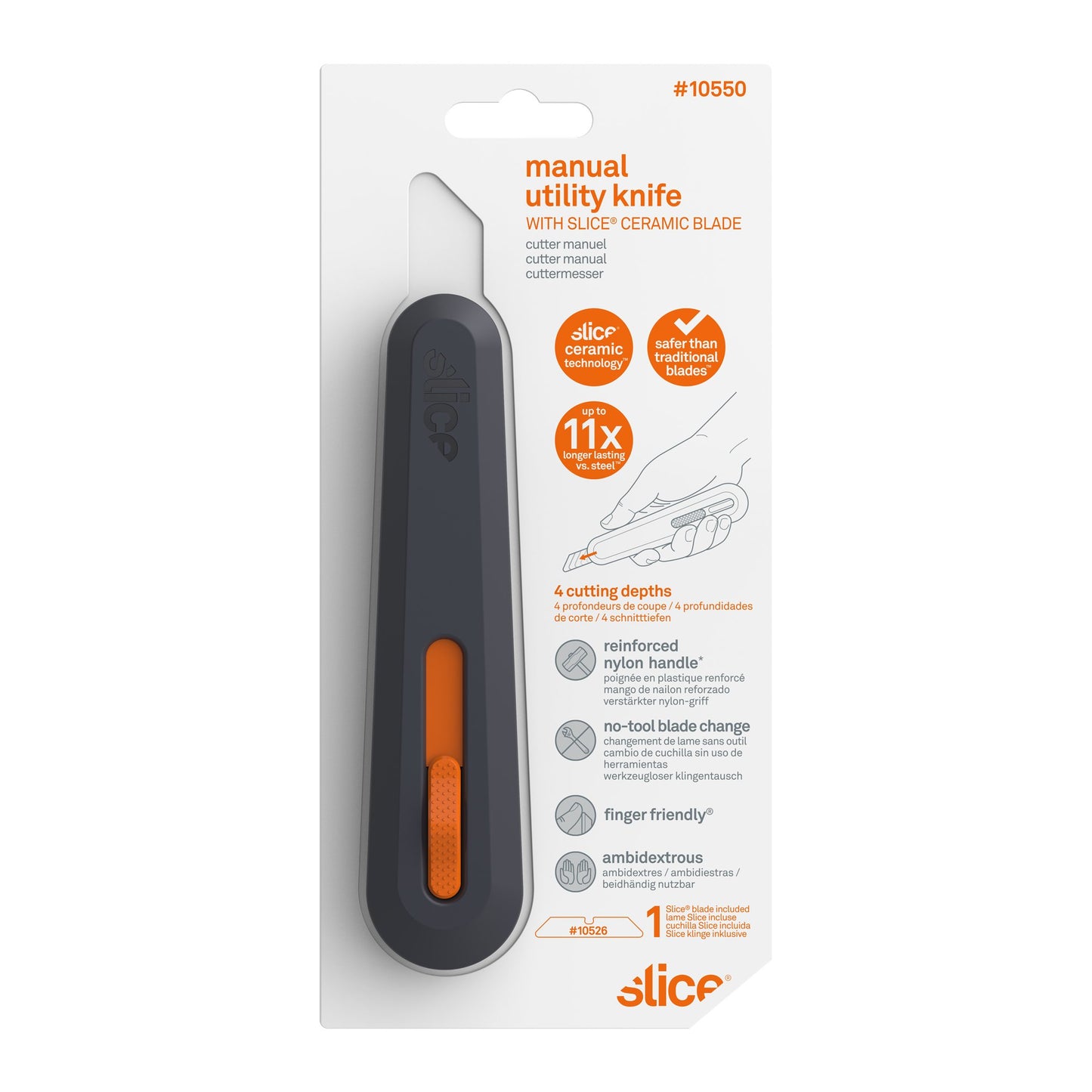Cutter manual
SKU #10550
El cutter manual Slice 10550 es uno de los 3 modelos disponibles. Este modelo de cutter profesional se caracteriza por un deslizador con 5 posiciones entre las que se puede elegir la longitud deseada para realizar el corte. Gracias a un innovador proceso de fabricación creado por Slice, el filo de la cuchilla es completamente seguro para los dedos. Al igual que el resto de nuestros modelos, el cutter manual cuenta con un robusto mango de nylon con fibra de vidrio y una cuchilla reemplazable de larga duración. Las cuchillas de cerámica de Slice no producen chispas, no son magnéticas y son químicamente inertes. Nunca se oxiden y se mantienen en perfectas condiciones en temperaturas de hasta 1600 ºC.
- Tipo de mango: 5 posiciones
- Robusto mango de nylon con fibra de vidrio
- Cuchillas compatibles: 10526, 10528
- Cuchilla de seguridad que se mantiene afilada 11 veces más tiempo
- Minimiza lesiones, reduce costos
- No produce chispas, no conduce la electricidad
- Diseño ambidextro
- Agujero para cordón para tener la herramienta siempre a la mano
- No se precisan herramientas para cambiar la cuchilla
- Menos cambios de cuchilla = menos lesiones
- Ref. #10550
Great for:
- Opening, cutting and disassembling boxes
- Slicing plastic packaging
- Cutting tape and banding
- Stripping cables
Product Specifications
Product Specifications
Cutting Depth:
Material: GFN, POM, Carbon Steel, zirconium oxide
Dimensions: L x W x H
Weight: 0.21 lbVideos
-
Manual Utility Knife
-
Stripping Wire Insulation: Choose the Safest Tool
-
How to Cut Ceiling Tile: Safety First
-
Cutting Ram Board®
-
How to Cut Super Sacks® Easily and Safely
-
How to Cut Visqueen Reinforced Plastic
-
Blade Replacement for Slice Utility Knives
FAQ
What Is a Utility Knife Used For?
This type of knife is used for a wide variety of tasks and materials, usually ones that require a sturdy, durable tool. Utility knife uses include scraping, piercing, or cutting, and materials include wire, carpeting, nylon straps, and metal sheets.
Is a Ceramic Utility Knife Safer?
A Slice utility knife is a safety tool because our proprietary grind creates a finger-friendly edge that effectively cuts most materials but resists cutting skin. And because advanced ceramics are much harder than steel, Slice blades last, on average, 11.2 times longer than steel blades.
What Kind of Utility Knife Blades Does Slice Offer?
To distinguish our different utility knife blade types, we look at how the blade is integrated with the handle. The Manual Utility Knife offers five fixed positions for blade, allowing the user to choose blade depth and keep the blade extended when it’s not in use. The Auto-Retractable Utility Knife has a slider button that must be engaged in order to extend the blade. This reduces injuries by ensuring that the blade is never left exposed when it’s not in use. Our Smart-Retracting Utility Knife has an added layer of safety. Its innovative technology senses when the blade loses contact with the cutting surface and automatically retracts the blade, even when the user is still holding the slider button.

